Anyone who’s had darts thrown at their head, willingly or otherwise, knows what it’s like to see a movie based on a video game. Whenever one of those sharp missiles hits anything other than your face feels like a win. The same is true watching video game adaptations. Any viewing experience that doesn’t seem like time is being cruelly robbed from your life feels like a victory. And when simply watchable is the highest achievement to unlock, the odds of quality seem unlikely. Yet, despite evidence to the contrary, there’s good reason to believe increased quality adaptations are possible.
The history of video game adaptations covers roughly thirty years. To date, it includes 44 live-action films and nine computer-animated features. Granted, there are several more from Japanese filmmakers and traditional anime animators, but the focus here will be on major Hollywood releases because that’s where the abysmal failures tend to happen. It’s those films which have largely soured audiences on video game adaptations, and the stink begins with the Super Mario Bros. in 1993.
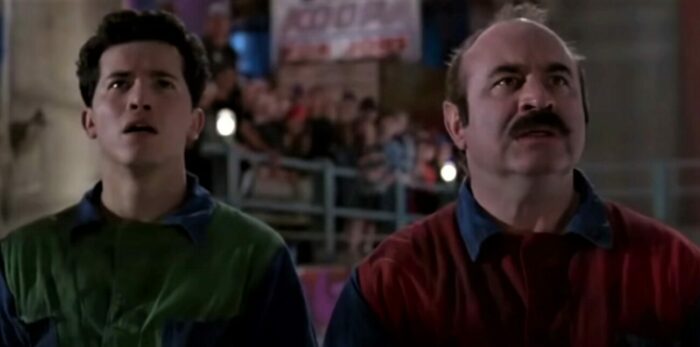
After Nintendo gave creative freedom to adapt the franchise into a film, moviemakers decided that a game aimed at kids would be the ideal source material for a dark dystopian satire about a despotic dinosaur man trying to invade reality from a parallel dimension. Though the plot involves concepts and characters from the video game series, the connection is tenuous at best. Anything vaguely familiar feels like being given a bowl of dirt then being told it’s the chocolate ice cream you were expecting.
Furthermore, in the pre-Pixar era of film making, the idea that something is meant for kids often meant insulting the audience’s intelligence. Nine different writers tackled the movie and elements of all their drafts remain in the feature turning it into a tonal and narrative mess laden with humorless comedy and insultingly moronic characters.
As film critic David Denby wrote, “The directors… demonstrate no talent whatsoever for the narrative art of feature movies,” and the film showed “nihilistic contempt for a child’s desire to be enchanted.”
Super Mario Bros. bombed at the box office so bad you can’t get a copy through airport security. The film cost $48 million to make and only earned $20 million worldwide. However, this didn’t stop two more major studio films from following in its footsteps.

Arriving in 1994, Double Dragon and Street Fighter hit the scene like an abusive redneck in a country western song. A fighting game and side-scrolling beat-‘em-up, both still aimed for kid-filled audiences. Consequently, much of the action involves bloodless violence that doesn’t seem to hurt so much as fatigue people. In Double Dragon, Alyssa Milano leads a ragtag band of teenagers resisting a despotic ruler in a Los Angeles that resembles a post-apocalyptic waterpark. In other words, it looks way more fun than a war zone should.
Street Fighter, meanwhile, is a generic action movie composed of characters plucked from the game. Other than that, it bears little resemblance to the source material. Instead of a movie centered around an underground fighting tournament, it’s about how diplomacy is for nerds—van Damme boot to the head.
However, although Double Dragon lost several million, Street Fighter would turn a tidy profit earning roughly $64.5 million. Despite every effort to appear otherwise, Hollywood is a business. As such, video game-based movies still seemed like a potential cash cow. That’s when filmmakers got an inadvertent assist from the United States government.
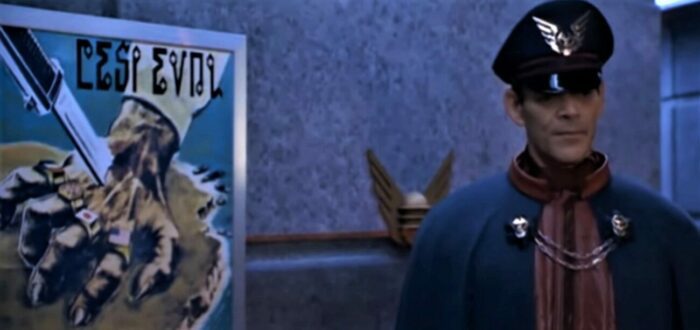
Following the release of games like Mortal Kombat and Night Trap, pearl-clutching politicians Joe Lieberman and Herbert Kohl launched congressional hearings looking into the violent content of video games. This sideways lean towards censorship, which could be accused of political theater rather than real concern, made video games a toxic influence warping children into dangerous deviants. Granted, Night Trap, a playable B-movie, is definitely not for little kids, but it hardly features the Terrifier 2 levels of gore implied by the likes of Lieberman. Still, these hearings did result in the voluntary establishment of the Entertainment Software Rating Board.
The ESRB essentially provides ratings for games similar to the ones the MPAA puts on films. I would argue this helped pave the way for Hollywood to feel less skittish about making more adult oriented video game adaptations. If the content of the game is for mature audiences, then the movie based on it can be as well. As such, attention from the controversy combined with the ability to aim at older audiences, and New Line Cinema lit the greenlight on a Mortal Kombat movie.
Unfortunately, Hollywood was still taking baby steps. Producers insisted Mortal Kombat not be R-rated. After all, a movie based on a game where a guy throws a spear in someone’s chest then drags them over bleeding and screaming shouldn’t risk losing that sweet piece of the PG-13 pie. So, the film contains no visible human deaths, and blood is kept to a near nonexistent minimum. Still, Mortal Kombat does succeed as an adaptation. It’s the first movie to truly embrace a video game’s plot, such as it is, and there are set piece action spectacles reminiscent of gameplay.
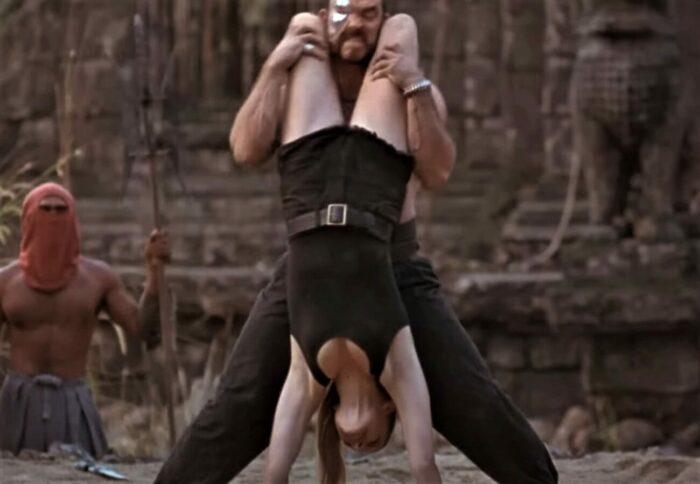
This set a tone for successful game adaptations. Instead of shoehorning characters and concepts into films with a vague resemblance to their video game inspirations, moviemakers could trust the source material to provide entertaining content. The upside to a lot of early video games being that they followed the thinnest of plotlines. Simple stories are easy to follow which means any audience can digest them, and the narrative doesn’t draw attention away from the visual spectacle.
However, ignoring everything that worked in the first movie, New Line Cinema inflicted the sequel Mortal Kombat: Annihilation on the world in 1997.
R.L Shaffer put it best calling it, “a film so brazenly stupid and poorly made it’s barely watchable.”
A cinematic testament to the cash-grab mentality of studios, the film lingers now as a cult comedy of sorts. This unintentional spoof highlights everything wrong with video game adaptations. Though Super Mario Bros. may have been a mess, there is a sincerity to its production. The same can’t be said for MK: Annihilation which tries to distract audiences with recognizable characters before bludgeoning viewers with a sack full of sewage. It isn’t enough for familiar characters to be on screen, they still need to do things crowds can relate to and care about.

Though this may’ve been the fatality that ended video game adaptations, other films would follow. Wing Commander, based on a popular game series about space combat, flew into theaters in 1999. Helmed by Chris Roberts who created the game, the movie flew right into a black hole. Low budget effects, bad dialogue, and a reliance on tired clichés hindered the film, but what really killed it is changes from the source material.
Fans of the game expecting to see the iconic starfighters from the series or characters, who’d already been portrayed in full motion video cutscenes by the likes of Mark Hamill, saw none of it on screen. Basically, the elements that are supposed to draw fans, seeing game content in the movie, never really materialized. Granted, there’s a fine line providing fan service that feels fresh as well as familiar but matching a game’s established imagery is critical. That’s part of what fans enjoy, so expect to see.
Some of the early allure of video game adaptations was seeing more lifelike renditions of favorite characters. While modern games are borderline lifelike, there’s still a visual style and tone to each that sets them apart. These elements are part of the world fans love and want more of. Removing or altering them beyond recognition only alienates the intended audience.
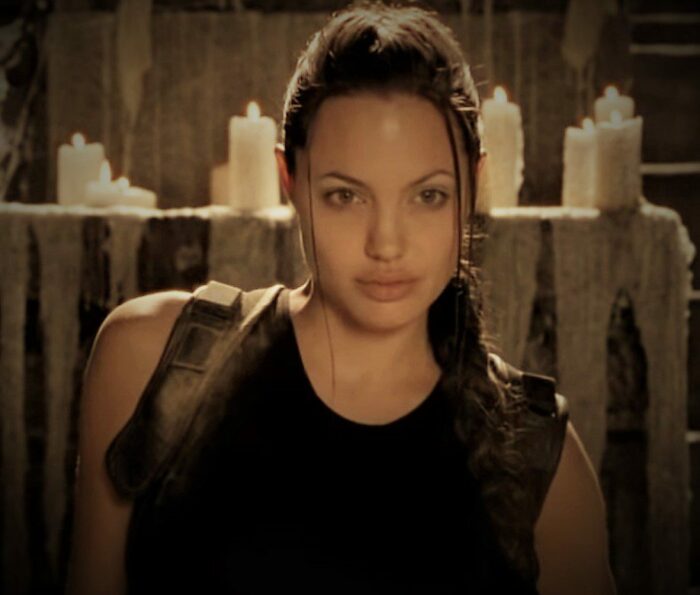
From 1996 on, Tomb Raider starring Lara Croft quickly became as recognizable as Sonic the Hedgehog or Mario. A solid action platformer with puzzle solving elements and a plot reminiscent of a good Indiana Jones movie, the success of the Tomb Raider franchise guaranteed Hollywood would smell wallet bait. Hoping to cash in, a film soon went into production which arrived in 2001.
It’s funny to think back on how the studio resisted casting Angelina Jolie. Despite being an Oscar winner, she wasn’t considered a bankable performer. Thankfully, the movie would go on to be the highest grossing “female-fronted action film” at the time. Part of that stemmed from Jolie bringing the entirety of her talent to the role.
That isn’t to suggest past performers didn’t take their parts seriously. Many did, doing the best they could with the material provided, but Jolie clearly invested more than memorization in her performance. She isn’t just reciting lines and following action choreography. She makes Lara Croft a three-dimensional presence, who feels like a real person. This set the bar for performances afterward, though the problem of material persisted.
Even the best performers can only do so much with bad scripts. This is painfully evident in the increasingly awful Resident Evil franchise. Though that said, the start of the movie series did something especially clever.
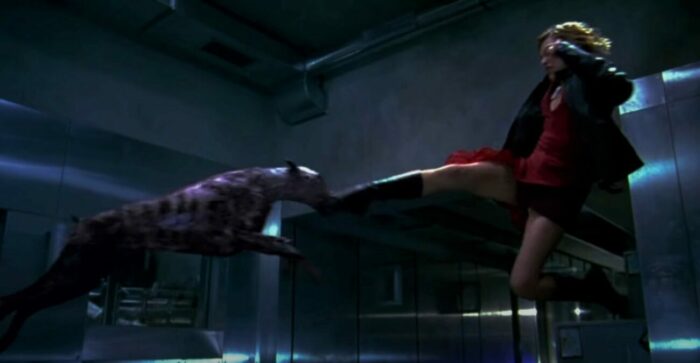
Released in 2002, the film is conceptually a prequel to the game. This allowed writer/director Paul W. S. Anderson to utilize familiar elements without having to risk disappointing fans by failing to deliver proper tie-ins. Basically, the evil Umbrella corporation and its facility overrun by zombies and various hideous beasties, along with survival horror action that feels more like stalling for an escape than furious victory. This also freed Anderson from the unavoidable hazard that nothing can surprise gamers who’ve played the title multiple times.
Making the first film a spiritual companion was a smart move that set an excellent precedent. Endeavoring to capture the essence of the game rather than recreate it scene by scene is far more likely. Although games have reached a level of cinematic excellence on their own, redoing them shot for shot is sort of bland. Fans may get a spark of joy seeing something they’ve seen a thousand times, but it can hamper the production. It establishes scenes the movie must head toward rather than developing organic moments. In other words, it means putting things in the film which may have no real reason to be there. Plus, not every element needs to be incorporated from games.
The fabulous game Ghost of Tsushima, which is like playing a Kurosawa samurai epic, has opportunities for quiet contemplation. For instance, players can stop to write haiku. This is an interesting optional portion of the game that allows players to reflect on in-game events, but it’s hard to believe the upcoming film adaptation will devote large amounts of screen time to poetry composition. Maybe a single brief scene then it’s right back to hack and slash.

Furthermore, elements serve different purposes depending on the media they’re in. Puzzles in video games are challenges for players to overcome. The same puzzle in a movie is an opportunity to highlight a character’s cleverness. This changes the relationship to the material since the enjoyment in a game is solving the puzzle, whereas a film conveys character traits while furthering the plot (i.e. the bone organ must be played to unlock a door to escape from approaching danger.)
This brings up interactivity, which is often the first thing defeatists mention when stating why video games can’t ever get quality film adaptations. The idea that a movie is something one watches passively while games involve active participation seems like a valid argument. However, it only holds water when filmmakers try to recreate the game.
2016’s Assassin’s Creed film adaptation gets a lot of visual aesthetics right, especially the stylized violence. The same is true for the first Silent Hill movie. They look like their source material, but the emulation ultimately adds nothing. Since cinema is a different media, and cannot recreate the experience of playing a game, it should be focused on exploration of the story and characters.
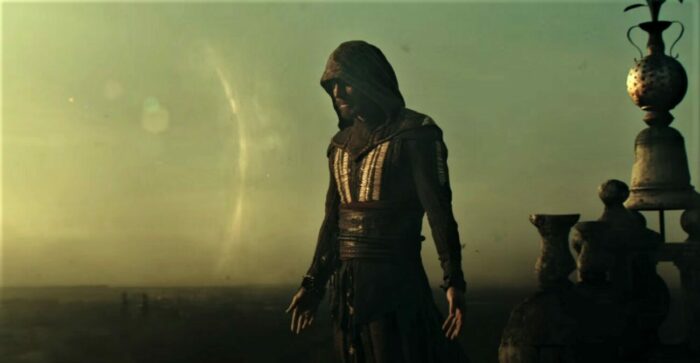
Like it or not, video games are part of our cultural collective mythology. Millions around the world play the same titles; people in Kyoto are just as likely to recognize Sonic the Hedgehog as folks in Skullbone, Tennessee. And deeper meaning covers an enormous spectrum. It runs from the simple good versus evil evident in Sonic and Mario games to quandaries about ethics and the human condition seen in The Last of Us.
As games gained the ability to tell more immersive, cinematic stories in their own right, they gained the potential to be about more than just racking up points and kills. There’s an opportunity through film to further explore those deeper elements of video games. Essentially, why these characters and their stories matter to players. Which isn’t to say things necessarily need to be a stuffy philosophy discussion.
Werewolves Within is a social deduction VR game from 2016. A group of players attempt to deduce who among them is secretly a werewolf before being slaughtered. That’s it. It’s mostly a game of questions and answers, but from this simple premise, filmmakers developed a movie adaptation that is spectacular.
Released in 2021, it stars Sam Richardson and Milana Vayntrub. The pair lead an outstanding comedic cast as a small, isolated town descends into horror because of werewolf attacks. Instead of attempting to perfectly replicate the game, moviemakers took what makes it fun and spun that into a darkly humorous film.

Video games like Halo, Fallout, and Bioshock all have immense in-game universes full of material for potential films. Angry Birds, a video game about hurling birds at pigs, provided enough for two charming movies. In other words, video game adaptations can tell their own stories while feeling familiar to fans.
Consider the Sam Raimi Spider-Man movies. Though those contain familiar aspects from the comics, they don’t attempt to recreate stories from them beat for beat. Sometimes an easter egg may imply something directly from a particular issue or storyline, but Raimi’s films remain their own entity while still being undoubtedly Spider-Man. The same could be true for any number of games.
Fortunately, in this day and age, visual effects are no longer an issue. In the past, anime adaptations typically fared better than live action features because they could include the stylized action found in many games. It’s easy to see this advantage when comparing the energetic anime Street Fighter to 1994’s live action yawn. Furthermore, some games simply won’t work except as CGI animated features. There’s no other way to capture their aesthetic and tone. Mario jump-stomping a turtle outside of a cartoon is an unsettling sight to behold. On the other side of that coin, The Last of Us demands a distinctly human presence.

There’s often discussion of how games can go on for sixty hours, and that jamming that content into a two hour film is a guaranteed failure. As such, some argue for television adaptations over movie versions. However, it’s irrelevant if the adaptation is already missing the point. The Halo tv series on Paramount+ proved that by, to put it mildly, “not going great”.
The biggest issue is that studios and filmmakers tend to come at video game adaptations with the wrong idea about what makes the games appealing. They aim for the visual spectacle as if that’s the only attraction. While those are part of the recipe, they forget how those moments make gamers feel.
The escapism of video games is more than frenzied colorful explosions, brutal bloody combat, or neon bullet porn. They make people feel heroic, powerful, and capable of accomplishing impossible tasks. Those same feelings can be hard to replicate through film, but movies can deepen the characters by exploring their motivations. It’s the difference between plot driven and character driven storytelling.
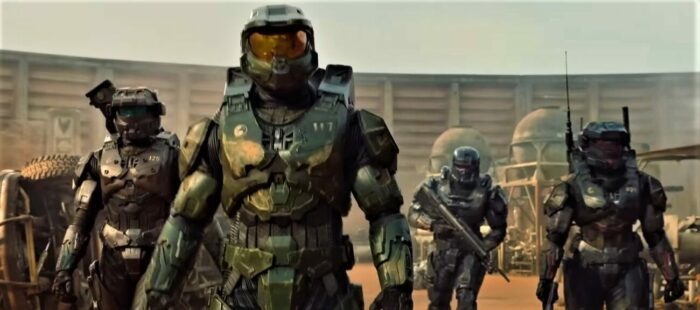
Plot driven is merely a matter of moving forward from one action set piece to the next. Character driven is the narrative advanced by choices and their consequences. The latter tends to elicit more thrills when action takes place because it becomes about something.
The Paul W. S. Anderson Resident Evil films are a great example. The first film is largely driven by character decisions and their consequences, which injects stakes into the action sequences. The sequels are increasingly bland films devoid of character development where every moment is simply meant to get to the next bang-bang shootie explosion. It’s something the recent Sonic films have avoided by being character driven films.
There’s thirty years of hits, misses, and abject failures to help navigate these waters. Game developers have even made things easier by crafting narratively complex games. Casting serious performers in character driven features that explore the themes and philosophies of games seem like a recipe for quality video game adaptations. Aiming at the audience a game is already intended for is another smart move. Finally, respecting the visual tone and bringing to life familiar imagery complete the picture. It doesn’t have to be a game’s story exactly so long as it feels like something genuinely from that universe.

Since 2002, every major studio video game adaptation has gotten bits of this right. Still, like a lot of things, it probably sounds easier on paper. Studio interference is bound to be an issue, especially since their ultimate goal is securing a golden goose. They don’t want one good movie they want the cinematic universe and merchandise it lays. But the truth is, none of that can exist without a good adaptation first.



